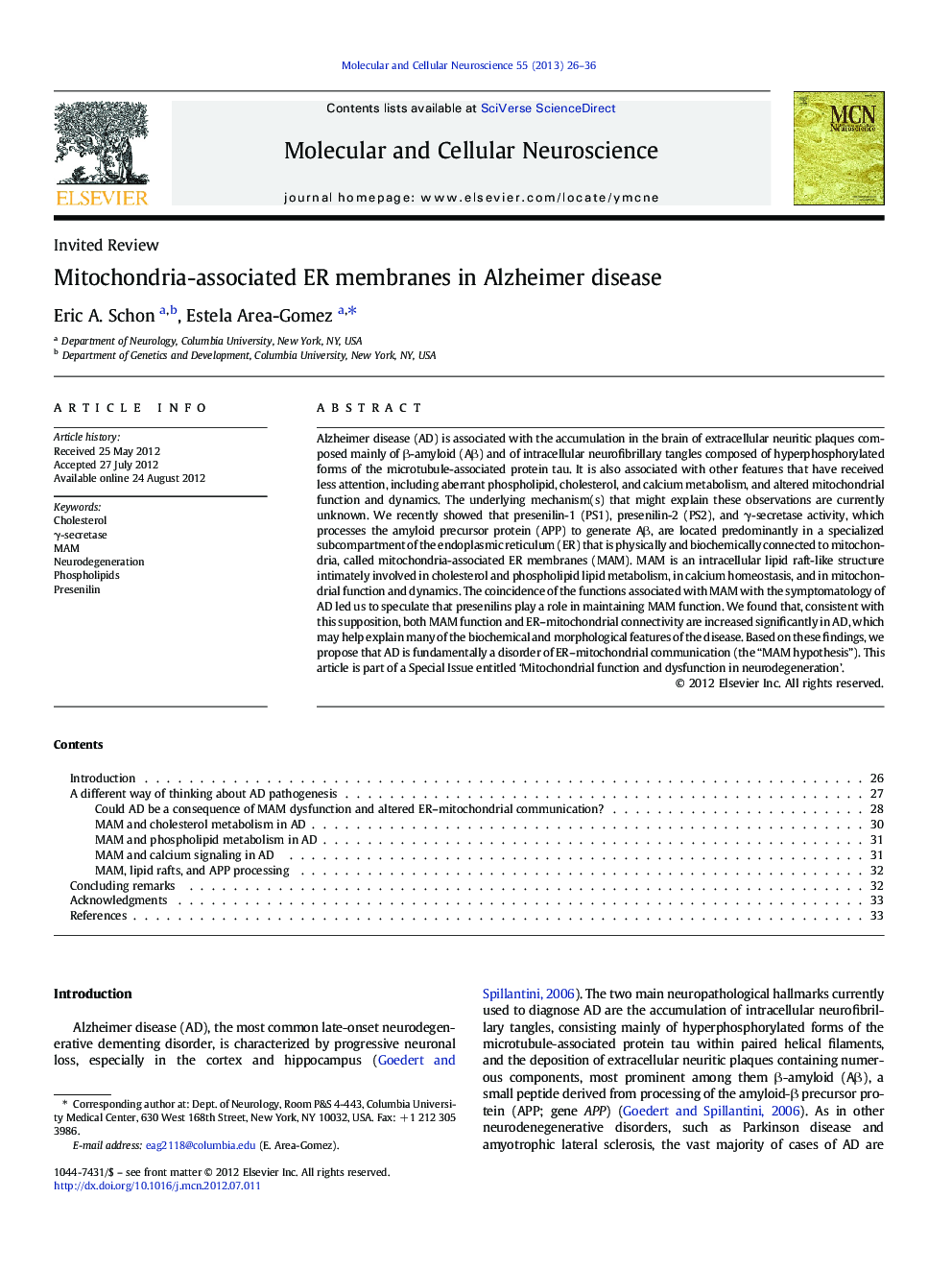| Article ID | Journal | Published Year | Pages | File Type |
|---|---|---|---|---|
| 8478692 | Molecular and Cellular Neuroscience | 2013 | 11 Pages |
Abstract
Alzheimer disease (AD) is associated with the accumulation in the brain of extracellular neuritic plaques composed mainly of β-amyloid (Aβ) and of intracellular neurofibrillary tangles composed of hyperphosphorylated forms of the microtubule-associated protein tau. It is also associated with other features that have received less attention, including aberrant phospholipid, cholesterol, and calcium metabolism, and altered mitochondrial function and dynamics. The underlying mechanism(s) that might explain these observations are currently unknown. We recently showed that presenilin-1 (PS1), presenilin-2 (PS2), and γ-secretase activity, which processes the amyloid precursor protein (APP) to generate Aβ, are located predominantly in a specialized subcompartment of the endoplasmic reticulum (ER) that is physically and biochemically connected to mitochondria, called mitochondria-associated ER membranes (MAM). MAM is an intracellular lipid raft-like structure intimately involved in cholesterol and phospholipid lipid metabolism, in calcium homeostasis, and in mitochondrial function and dynamics. The coincidence of the functions associated with MAM with the symptomatology of AD led us to speculate that presenilins play a role in maintaining MAM function. We found that, consistent with this supposition, both MAM function and ER-mitochondrial connectivity are increased significantly in AD, which may help explain many of the biochemical and morphological features of the disease. Based on these findings, we propose that AD is fundamentally a disorder of ER-mitochondrial communication (the “MAM hypothesis”). This article is part of a Special Issue entitled 'Mitochondrial function and dysfunction in neurodegeneration'.
Related Topics
Life Sciences
Biochemistry, Genetics and Molecular Biology
Cell Biology
Authors
Eric A. Schon, Estela Area-Gomez,
